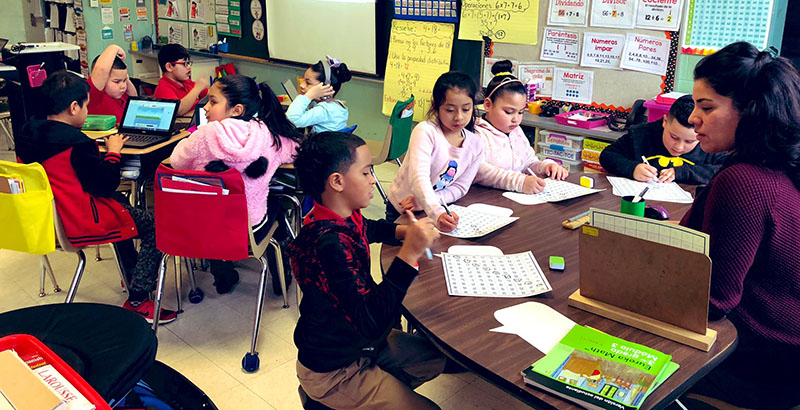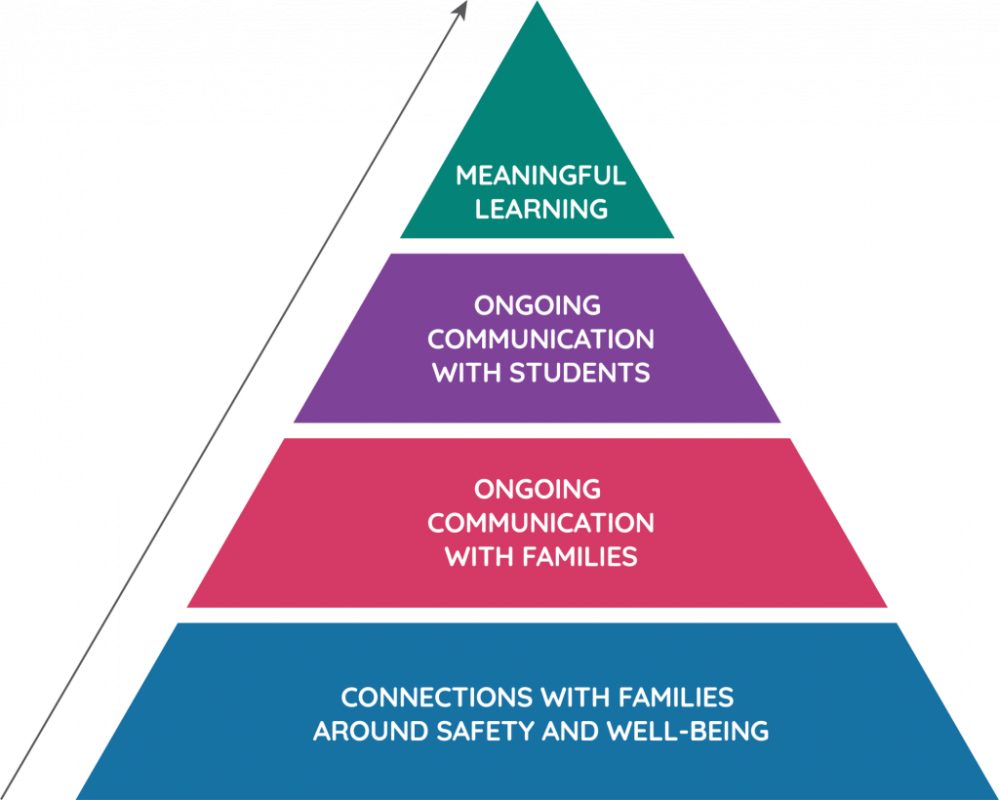Distance Learning as an Antidote to Fear: 4 Key Considerations That Put Student and Family Well-Being First

In moments of crisis, I look to my ancestors for guidance and strength. Blessed with the wisdom of millennia-old East African traditions, I trust in the power of collective resilience and hope. I grew up with stories of colonization and a 30-year war, as a result of which, by age 14, both of my parents were on their own, fleeing the country on foot as refugees. In spite of, and perhaps because of, the uncertainty of survival and access to basic needs, they took refuge and comfort in spaces of learning. Their stories helped me recognize early on how learning is a powerful antidote to fear, uncertainty and danger.
Every crisis is different, yet trauma forces us to learn the practice of healing and persevering for the sake of growth. Amid the COVID-19 crisis, communities all over the world are calling upon their own traditions to heal bodies, minds and hearts. As we honor the individuals who are leading communities through this pandemic, our educators, who are navigating uncharted terrain in the form of distance learning, deserve our deep gratitude. With little time to prepare, they are managing the physical, psychological and intellectual needs of their students remotely. And this shift is overwhelming.
Through the confusion and chaos, we must resist the urge to accumulate resources, just as we do toilet paper and hand sanitizer, and to jump right into content and tasks without first addressing the ways in which the pandemic directly affects students and families.
While no plan will be perfect, all must have a North Star, a foundational belief that guides the way. At Highlander Institute, our North Star is the belief that meaningful learning grounded in relationships can heal communities, especially in times of crisis. We believe we have an opportunity to inspire hope and empowerment through the four considerations displayed in the pyramid below.
Consideration 1: Connections with families around safety and well-being
How are you reaching out to all families to understand their current conditions and needs?
The pyramid’s base prioritizes connections with families, with a focus on overall well-being. While student and family experiences differ across communities, it’s important to recognize that this pandemic is magnifying systemic inequities. Although COVID-19 is inherently color-blind, the effects on communities are not. States that are disaggregating data by race are finding disproportionately high mortality rates among communities of color, particularly in African-American communities.
In an interview with ProPublica, Dr. Camara Jones, a physician and epidemiologist who spent over a decade at the Centers for Disease Control and Prevention examining racial bias in the medical system, asserts, “COVID is just unmasking the deep disinvestment in our communities, the historical injustices and the impact of residential segregation. … This is the time to name racism as the cause of all of those things.” Members of these communities are not prone to illness by virtue of their identities; they are prone to illness because of systemic inequity.
These systemic inequities are just as pervasive in education. It is impossible to miss the magnification of gaps in resources along lines of race and socioeconomic status. As educators, we must be proactive in establishing meaningful relationships with families and communities, listening to their needs and doing our best to match them with relevant resources and supports.
Considerations 2 and 3: Ongoing communication with families and students
How are you communicating with families and students in a way that facilitates relationship building?
In times of uncertainty, we rely on community to ground us and keep us moving. Through regular and open communication, we can design with the needs of families and students in mind. One teacher learned this after constructing initial content with multiple innovative tools that were unfamiliar to her students. When they struggled to engage, she took a step back. Recognizing her students’ needs, she refocused on reaching every family in their preferred language and rebuilding relationships through two-way communication, which helped inform her future curricular and instructional design.
Consideration 4: Meaningful learning
How are you thinking differently about the kinds of learning experiences students are engaging with?
Meaningful opportunities for connection and learning are possible in this crisis, but first we must recalibrate. Rather than focus on accountability, let us focus on connecting with and learning from our students’ families, flex our creative muscles, and co-construct activities that reflect the shift in our environment and capitalize on our students’ needs, experiences and interests. Our kids want to learn, and many students cope by maintaining regular, predictable structures that promote a sense of normalcy. As we recalibrate, consider what it will take to support students with diverse needs through rich, engaging opportunities to investigate meaningful and relevant topics.
Many families, mine included, have experienced generations of disruption and understand how to construct meaningful experiences in environments with limited resources and imperfect, even traumatic, environments. This is an opportunity to learn how communities have historically supported children through crises. Let us call upon the rich cultural histories from which our students come, honor their strengths and draw upon the sources of inspiration they channel. We must trust that beyond formal school assignments, our students’ home lives provide rich source material for purpose and relevance.
All of us need spaces to investigate the world and understand the contexts within which our challenges are situated in order to be equipped to find solutions. We need learning communities that cultivate a sense of belonging and ease the burdens of challenges outside of our control. We need intellectually stimulating spaces that inspire us to think about and do things differently. We need to know that whatever happens in the world, there is hope for a better future and that each of us has the power and the tools to create it.
While we cannot offer straightforward answers that meet all needs, we can offer our own North Star. Perhaps this can be an opportunity of mutual learning to truly partner with families in support of children. Perhaps shared anxieties might help us nurture empathy. Perhaps when our children fill classrooms again, we will do things fundamentally differently based on what we learn now.
As you contemplate each of these considerations, root yourself in your own North Star to determine what meaningful benefits can emerge from this experience. As my parents taught me, learning is our strongest antidote to fear. I am confident that there is no crisis stronger than our collective resilience.
Malika Ali is the director of pedagogy at Highlander Institute in Providence, Rhode Island. Find her on Twitter at @Malika_Ali.
Get stories like these delivered straight to your inbox. Sign up for The 74 Newsletter

;)
